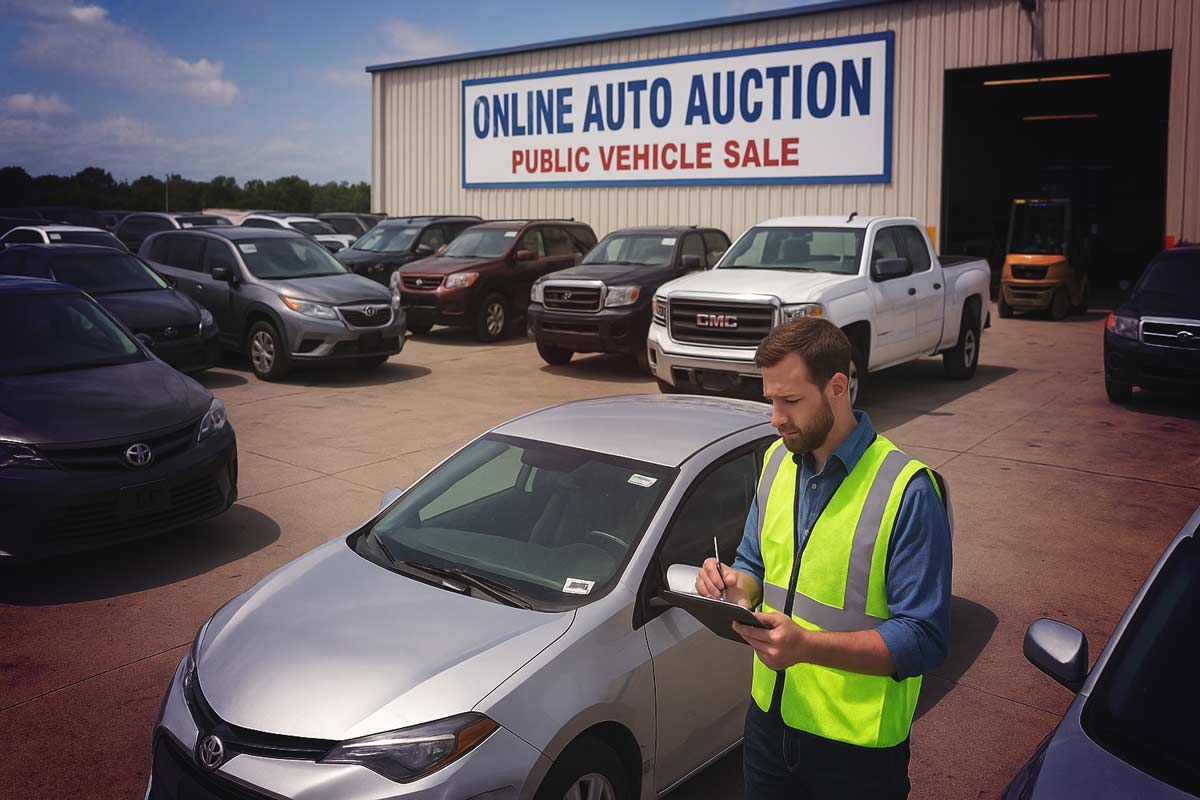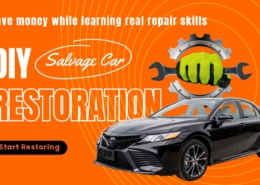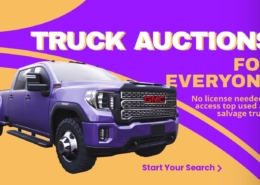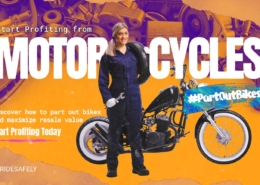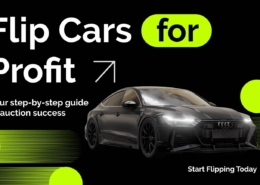 https://auction.ridesafely.com/images/2025/10/own-supercar-for-less-banner.jpg
865
1440
RideSafely
/images/2025/01/ridesafely-logo.svg
RideSafely2025-10-10 13:42:502025-10-13 12:18:37How to Own a Supercar for Less: Wrecked Exotics for Sale
https://auction.ridesafely.com/images/2025/10/own-supercar-for-less-banner.jpg
865
1440
RideSafely
/images/2025/01/ridesafely-logo.svg
RideSafely2025-10-10 13:42:502025-10-13 12:18:37How to Own a Supercar for Less: Wrecked Exotics for SaleWe share our extensive, battle-tested blueprint for buying cars at auctions, flipping them, and maximizing profit. If you’re serious about entering the car-flipping game, this is the guide that leaves no stone unturned.
Understanding the Car‑Flipping Landscape
Car flipping is the art & business of purchasing vehicles at low prices (often via auctions or distressed sales), investing in them appropriately (repairs, cleaning, minor upgrades), and reselling them at a higher price quickly. It combines automotive knowledge, business acumen, pricing research, and risk mitigation.
To succeed, we must align three core pillars:
- Vehicle Acquisition – finding undervalued cars with upside
- Cost Efficiency – minimizing repair, transport, auction, and licensing costs
- Sales Execution – getting maximum resale value through brilliant presentation & channels
If you’re still exploring what types of vehicles are commonly flipped, you can explore the diverse range of vehicles available at RideSafely to spot profitable patterns.
Market Trends & Demand: What Sells Best
We monitor and respond to real‐time shifts. These are the key variables we track:
- Popular makes/models by region – e.g., trucks/SUVs in rural or cold climates; compact, efficient cars in urban areas.
- Age, mileage & condition sweet spot – vehicles 5‑10 years old often have enough remaining lifespan to convince buyers, but still depreciated enough to be affordable to acquire.
- Fuel efficiency & drivetrain popularity – hybrids, electrics, AWD/4WD – vary depending on the area (snow, off-road); this also impacts insurance & maintenance.
- Feature/trim demand – sunroof, navigation, heated seats, safety features (for family buyers), towing packages, etc.
- Seasonal cycles – convertibles/summer vehicles in spring, 4WD in fall/winter, etc.
Need help identifying what’s moving fast in today’s auction space? Check out top-selling used and salvage vehicles on RideSafely for real-world insights.
Preparing Your Strategy Before Auctions
| Planning Element | What We Do | Why It Matters |
|---|---|---|
| Budgeting in all costs | Include purchase price, auction fees, transport, minor repairs, licensing, and taxes. | Ensures real profit and prevents running out of cash midway through the flip. |
| Target inventory profile | Decide on target makes, age, mileage, damage tolerance, and title type (clean or salvage). | Helps avoid bidding on vehicles that don’t fit your resale goals or risk profile. |
| Logistics & workspace arranged | Secure tools, mechanic availability, storage space, and track upcoming auction schedules. | Improves turnaround time and keeps the flipping process efficient. |
| Legal setup | Understand sales limits, licensing requirements, and tax obligations in your state. | Prevents legal issues and fines while maintaining compliance with flipping laws. |
Not every auction requires a dealer license or bid card. You can often buy cars at auctions without a dealer license using platforms that support public buyers.
How to Find and Analyze Auction Vehicles
Auction Types
- Public Auto Auctions – open to non‑dealers; limited selection; possibly high fees.
- Dealer Auctions – offer more inventory and better deals, but often require a license or purchasing through a proxy or RideSafely.
- Online Auctions – Copart, IAAI, RideSafely, regional ones; allow inspection via photos/videos; sometimes salvage.
- Repo / Impound Lot Auctions – potential bargains, but more risk (title issues, unknown history).
Curious about who’s actually allowed to participate? Our complete guide on who can buy at online car auctions breaks it down clearly.
Vehicle Inspection Checklist
- Title status (clean, salvage, rebuilt)
- Number of owners; accident history; flood damage (vehicle history reports)
- Mechanical condition: engine smoke, oil leaks, transmission slipping, overheating, brake condition
- Rust/frame damage, especially in the undercarriage, wheel wells, and door sills
- Interior condition: upholstery, electronics, dashboard warning lights
- Tires condition; fluids (oil, coolant); battery health
Estimating Repair and Hidden Costs
- Always add a buffer (10‑25%) for unexpected repair costs.
- Transportation & towing: sometimes overlooked, but can kill margin.
- Auction buyer’s premiums and fees.
- Title transfer fees, registration, emissions, or safety inspections are required in your state.
Bidding and Purchase Process Tactics
- Set a strict ceiling price for each vehicle before bidding; know your break-even point.
- Observe previous auction results for similar vehicles—what were the final bid and fees?
- Use pre‑bidding tools in online auctions when feasible.
- Be disciplined: walk away if the bid exceeds the reasonable value.
- Use proxies or agents if you’re inexperienced or remote.
First time bidding? Don’t miss this primer on what to know before you bid to avoid costly mistakes.
Repairs, Reconditioning and Cost Control
We view reconditioning not as a cost, but as a value amplifier—but one that is controlled.
- Prioritize repairs that immediately increase resale value (tires, brakes, lights, cosmetic fixes)
- Avoid overrestoring; luxury refinishing may cost more than it returns.
- Maintain clear documentation of all repairs, parts, and receipts—it enhances buyer trust and confidence.
- Cleanliness counts: interior detailing, odor removal, exterior wash/wax—often low cost, high perceived value.
- Use trusted suppliers & mechanics; create working relationships for better pricing.
Legal, Licensing and Documentation Essentials
- Check state laws: Many jurisdictions limit the number of cars you can sell in a year without a dealer’s license. Exceeding that risks penalties.
- Ensure that title transfer, registration, and emissions/safety inspections are handled correctly.
- Collect and provide required disclosure statements (accident history, flood damage, salvage title).
- Understand the sales tax and income tax implications. Keep detailed records of all transactions.
Marketing, Sales Channels and Pricing Strategy
- High‑quality listings: clear, professional photos; multiple angles; inside & engine bay; video when possible.
- Write thorough descriptions: mileage, condition, any recent maintenance, and known issues. Honesty builds trust.
- Use multiple sales platforms: online marketplaces (Cars.com, Autotrader, Craigslist, eBay Motors), local classifieds, social media, and sometimes consignment lots.
- Price competitively: account for your costs, desired profit, and market comps. Use tools like Kelley Blue Book, NADA Guides, and Auction history.
- Consider offering guarantees or limited warranties (even short ones) to reduce buyer hesitation.
Profit Forecasting, Risk Management and Scaling
- Profit formula:
- Always run worst‑case scenario calculations. If the vehicle needs more work than anticipated, does profit still hold?
- Risk management tactics:
- Limit the capital committed at once
- Start small, test with one or two flips
- Diversify types of vehicles to spread risk.
- Scaling up: once consistent returns are achieved:
- Build a reliable supply network (mechanics, salvage yards, contacts)
- Consider obtaining a dealer license to access better deals & reduce some restrictions.
- Streamline repair & reconditioning processes.
Sale Price − (Purchase Price + All Costs) = Net Profit
Profitability Case Study Example
| Stage | Description |
|---|---|
| Buy Car at Auction | Initial vehicle purchase from online or in-person auction. |
| Assess Vehicle Condition | Determine if repairs needed are minor or major. |
| Low Repair Cost | Minor cosmetic or mechanical issues requiring quick fixes. |
| Quick Reconditioning | Simple upgrades like brake service, tire replacement, detailing. |
| Sell via Local Market / Online Platforms | List on marketplaces such as Facebook, Craigslist, or Autotrader. |
| Profit Margin: 15–25% | Healthy ROI from well-chosen vehicle and efficient repairs. |
| High Repair Cost | Major issues like transmission or structural/frame repair. |
| Heavy Repairs | Time-consuming and costly work that may reduce profit potential. |
| Sell via Wholesale / Trade‑Ins | Move vehicle quickly through dealer network or auction resale. |
| Profit Margin: 5–10% or Break Even | Lower margin due to higher repair costs and reduced resale value. |
In this flow:
- If we select a car requiring minor repairs, we can quickly recondition it, list it, and sell it with a healthy margin.
- If a major repair is needed, sometimes a wholesale or trade‑in is safer than sinking time & money.
Summary: Our Key Takeaways
- A razor-sharp plan and budget that includes all costs is non-negotiable.
- Skill in assessing a vehicle’s actual condition, including hidden or potential future issues, gives us an edge.
- Choosing the right markets and vehicles tailored to local demand maximizes selling speed and profit.
- Legal compliance, documentation, and transparency foster trust and prevent costly problems in the future.
- Efficiency in repair, presentation, and sales makes the difference between profit and loss.
Frequently Asked Questions About Car Flipping
Do I need a dealer license to flip cars?
Not always. Most U.S. states allow a limited number of vehicle sales per year without a dealer license. However, if you plan to flip cars as a business, getting licensed gives you access to more auctions and legal protections. Check your local laws for more information.
How much money do I need to start flipping cars?
You can start with as little as $2,500 to $5,000, but having $7,500 to $10,000 gives you more flexibility. Remember to budget for purchase price, auction fees, transport, repairs, and resale prep.
Where can I buy cars to flip?
Public and online auctions (like RideSafely), dealer-only auctions (if licensed), repossession lots, and private sellers are all sources. Online auctions provide nationwide access and convenience.
What types of cars are best for flipping?
Reliable brands like Toyota, Honda, Ford, and Chevrolet with clean titles, mid-range mileage, and minimal cosmetic issues are ideal. Trucks, SUVs, and fuel-efficient sedans sell quickly in most markets.
How do I estimate repair costs before buying?
Use auction photos, vehicle history reports, and mechanical inspection services when available. It’s wise to add a 15–25% buffer for unexpected issues.
How long does it take to flip a car?
Experienced flippers can turn cars around in 7 to 30 days. The timeline depends on the car’s condition, repair needs, market trends, and how quickly it sells once listed.
What are the biggest risks when flipping cars?
Overpaying at auction, underestimating repair costs, title issues, hidden mechanical problems, and slow resale are common pitfalls. Proper research and discipline can prevent most of these.
